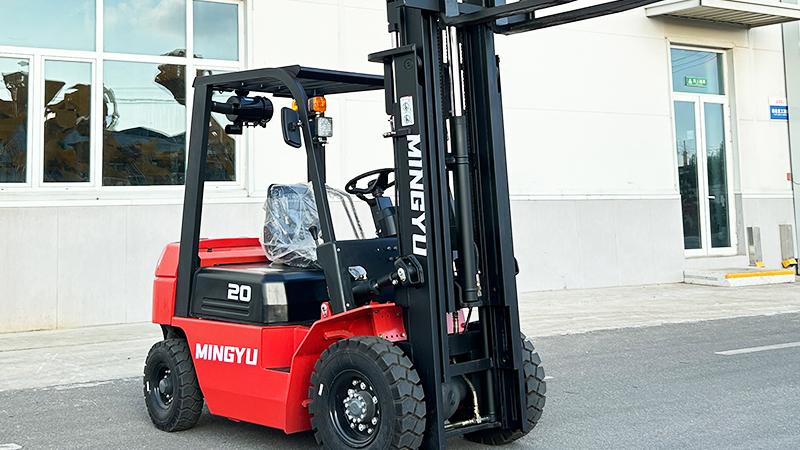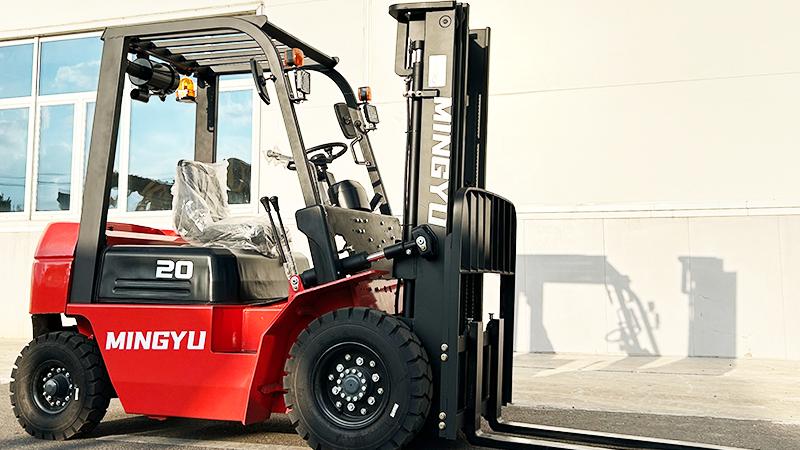The question of forklift inspection frequency is not merely a matter of operational procedure but a fundamental pillar of industrial safety and regulatory compliance, primarily governed in the United States by the Occupational Safety and Health Administration (OSHA). The unequivocal mandate, as detailed under OSHA standard 1910.178(q)(7), requires that powered industrial trucks, a category encompassing the vast majority of forklifts, be examined at a minimum before each and every work shift. This non-negotiable requirement forms the bedrock of a legally sound and safe operational environment. The logic behind this daily inspection protocol is profoundly pragmatic; a forklift, much like a commercial aircraft or a heavy-duty truck, is a complex piece of machinery subjected to significant mechanical, hydraulic, and electrical stresses during its operation. A pre-shift inspection is the first and most critical line of defense against catastrophic failure. It is designed to catch developing issues—a slow hydraulic leak, a slight crack in the overhead guard, worn tire treads, or malfunctioning brakes—before they escalate into incidents causing property damage, severe injury, or loss of life. This daily ritual, often taking no more than five to ten minutes when performed by a trained operator, is a powerful risk mitigation tool. It shifts the safety paradigm from reactive accident response to proactive hazard identification. Furthermore, this frequency is not a suggestion but a legal obligation, and failure to adhere to it can result in substantial financial penalties for an organization, not to mention the devastating liability in the event of an accident. Thus, the "how often" is clearly and unambiguously defined by federal law: a thorough inspection must be conducted daily, or before each shift if the equipment is used in multiple-shift operations, ensuring that every forklift entering the operational floor is in a safe and serviceable condition.
While the daily pre-shift inspection is a mandatory and operator-driven activity, it represents only one layer of a comprehensive inspection and maintenance ecosystem. The second critical tier of inspection frequency is the "periodic" or formalized inspection, which OSHA stipulates must be conducted at least annually. However, industry best practices and common sense often dictate a much more frequent schedule, typically on a quarterly or even monthly basis, depending on the intensity and duration of the forklift's usage. A forklift operating in a single-shift, light-duty warehouse environment will have vastly different periodic needs compared to one operating around the clock in a corrosive, high-impact manufacturing plant or a lumber yard. These periodic inspections are far more in-depth and must be performed by a qualified and certified mechanic or technician. They involve a meticulous disassembly, examination, and testing of critical components that are beyond the scope of a daily visual check. This includes detailed assessment of the mast channels for wear and distortion, load testing of the forks, thorough analysis of the hydraulic system for internal pump wear and valve functionality, exhaustive electrical diagnostics on the controller and wiring, and precise measurement of brake performance and axle alignment. The purpose of this rigorous and frequent periodic schedule is to identify and rectify latent or systemic issues that are not apparent to the operator during the daily check. It is a deep dive into the machine's health, aimed at preventing unexpected downtime, extending the equipment's useful lifespan, and ensuring that the core structural and functional integrity of the forklift remains uncompromised over years of demanding service.
Beyond the binary of daily and periodic inspections, the real-world application of inspection frequency is a dynamic calculus influenced by a multitude of operational and environmental factors. The foundational OSHA requirement provides the legal minimum, but a truly robust safety program tailors its inspection rigor to the specific conditions of its operation. For instance, the type of forklift profoundly impacts inspection needs. An electric forklift used indoors will require intense focus on its battery integrity, charger connections, and controller fault codes, with daily checks for water levels in lead-acid batteries and cable wear. In contrast, an internal combustion forklift operating outdoors will demand daily scrutiny of engine oil levels, air filters, radiator coolant, and the integrity of the exhaust system. Furthermore, the operating environment is a major determinant. A forklift used in a cold storage facility will experience different stresses on its hydraulics and tires than one in a steel mill, necessitating more frequent checks on specific components. The concept of "severe or unusual service," as mentioned by OSHA, is a critical trigger for unscheduled inspections. This includes incidents such as a forklift being involved in a tip-over or collision, exposure to fire or flood, or even a sudden, significant change in its operational duty cycle. In such events, a comprehensive inspection by a qualified technician is mandatory before the truck can be returned to service, regardless of when its last scheduled inspection occurred. This adaptive, risk-based approach ensures that inspection frequency is not just a calendar-based activity but a responsive and intelligent process aligned with the actual wear and tear on the equipment.
Ultimately, adhering to a disciplined and frequent inspection regimen is not a burdensome compliance task; it is a strategic investment that yields substantial returns in safety, productivity, and financial performance. The most significant return is the preservation of human life and the prevention of workplace injuries. A single accident avoided by identifying a faulty brake line during a daily inspection is incalculable in terms of human cost. This proactive culture of safety also boosts operator morale and confidence, knowing they are operating well-maintained equipment. From a productivity standpoint, frequent inspections are a powerful tool for maximizing uptime. Identifying a failing wheel bearing during a periodic inspection allows for scheduled, off-peak repair, preventing a catastrophic failure that would halt a production line during a critical shift. This predictive maintenance approach, fueled by consistent inspection data, minimizes unplanned downtime, optimizes maintenance budgets, and extends the total service life of the forklift fleet, thereby lowering the total cost of ownership. The meticulous records generated from daily and periodic inspections also serve as a vital legal and operational log, providing demonstrable evidence of due diligence in the event of an OSHA audit or insurance investigation. In conclusion, the question of "how often" is answered by a layered strategy: uncompromising daily checks by operators, rigorously scheduled periodic inspections by technicians, and a responsive protocol for unusual circumstances, all working in concert to create a safe, efficient, and financially sound material handling operation.
Post time:Oct.31.2025



